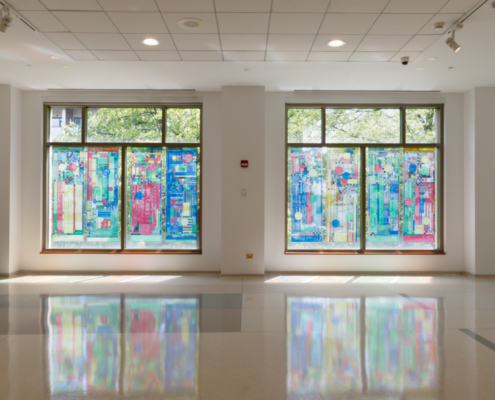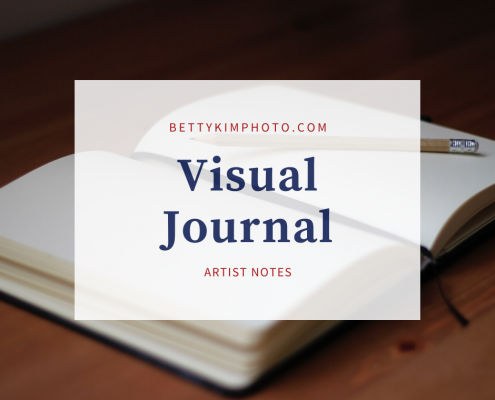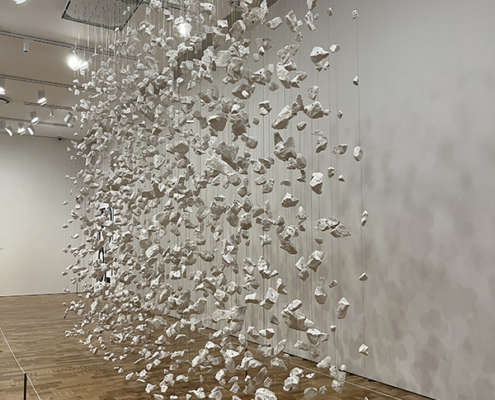Regarding the Pain of Others by Susan Sontag
July 17, 2023
Last March, between the winter and spring quarters, I finally had a moment to read. Read not because I had to but because I wanted to. I had Regarding the Pain of Others (affiliate link) in my possession for months.
View this post on Instagram
I felt the need to finish this book after a two-month stint in the hospital. So much uncertainty each day, alternating between overnight stays, classes, and home life. Those days are a blur now. But the notes remind me of the days after coming home.
Notes
“Nonstop imagery (television, streaming video, movies) is our surround, but when it comes to remembering, the photograph has a deeper bite.” 22
“Memory freeze-frames; its basic unit is the single image. In an era of information overload, the photograph provides a quick way of apprehending something and a compact form for memorizing it. The photograph is like a quotation or a maxim of the proverb. Each of them mentally stocks hundreds of photographs, subject to recall.” 22
She cites Robert Capa’s Spanish Civil War photograph of a Republican soldier being shot right at the precise moment. https://en.wikipedia.org/wiki/The_Falling_Soldier#/media/File:Capa,_Death_of_a_Loyalist_Soldier.jpg
“The hunt for more dramatic image drives the photographic enterprise and is part of the normality of a culture in which shock has become a leading stimulus of consumption and source of value. ‘Beauty will be convulsive, or it will not be,’ proclaimed Andre’ Breton. He called this aesthetic ideal “surrealist,” but in a culture radically revamped by the ascendancy of mercantile values, to ask that images be jarring, clamorous, and eye-opening seems like elementary realism as well as good business sense. How else to make a dent when there is incessant exposure to images and overexposure to a handful of images seen again and again? The image as shock and the image as cliché’ are two aspects of the same presence.” 23
“Ever since cameras were invented in 1839, photography has kept company with death. Because an image produced with a camera is, literally, a trace of something brought before the lens, photographs were superior to any painting as a memento of the vanished past and the dear departed. To seize death in the making was another matter: the camera’s reach remained limited as long as it has to be lugged about, set down, and steadied. But once the camera was emancipated from the tripod, truly portable, and equipped with a range finder and a variety of lenses that permitted unprecedented feats of close observation from a distant vantage point, picture-taking acquired an immediacy and authority greater than any verbal account in conveying horror mass-produced death.” 24
“Photographs had the advantage of uniting two contradictory features. Their credential of objectivity was inbuilt. Yet they always had, necessarily, a point of view.” 26
https://www.blind-magazine.com/stories/here-is-new-york-a-democracy-of-photographs/
Sontag references 9/11 and a grassroots exhibition turned into a book: A Democracy of Photographs.” 28
- Amateur and professional photographs mixed in one exhibition space/book
” Whether the photograph I understood as a naïve object or the work of an experienced artificer, its meaning – and the viewer’s response – depends on how the picture is identified or misidentified; that is on words.” 29
- Referencing back to Here is New York: A Democracy of Photographs – Sontag says that the viewers didn’t need captions because they understood the work and were part of the experience. But one day, there will be a need for captions as “misreadings and misrememberings” are sure to occur. 29
“Normally, if there is any distance from the subject, what a photograph, “says” can be read in several ways.” 29
Chapter 3
“The iconography of suffering has a long pedigree. The sufferings most often deemed worthy of representation are those understood to be the product of wrath, divine or human.” 40
“Suffering from natural causes, such as illness or childbirth, is scantily represented in the history of art; that caused by accident, virtually or not at all – as if there were no such thing as suffering by inadvertence or misadventure.” 40
She mostly identifies Christian art as depicting the most divine suffering, Christian saints, etc.
“It seems that the appetite for pictures showing bodies in pain is keen, almost, as the desire for ones that show bodies naked. For many centuries, Christian art, depictions of hell offered both of these elemental satisfactions.”41
“No moral charge attaches to the representation of these cruelties. Just a provocation: can you look at this? There is a satisfaction of being able to look at the image without flinching. There is the pleasure of flinching.” 41
Example The Flaying of Marsyas by Titian
https://www.metmuseum.org/art/collection/search/656438
Sontag says the horror in a painting and the horror of war in a photograph are both difficult to look at, “But there is a shame as well as shock in looking at the close-up of a real horror.” 41 The only exception as the medical doctors on the battlefield have the right to look at those images. The rest of us are voyeurs. “Perhaps the only people with the right to look at images of suffering of this extreme order are those who could do something to alleviate it.” 42
Sontag references Goya’s The Disasters of War, 83 etchings of depicting Napolean’s rule over Spain. France invaded Spain in 1808 and ruled over….
https://en.wikipedia.org/wiki/The_Disasters_of_War
“Goya’s images move the viewer closer to the horror.” 44
Lots of images of the female figure suffering
“With Goya, a new standard for responsiveness to suffering enters art.” 45
“While the image, like every image, is an invitation to look, the caption, more often than not, insists on the difficulty of doing just that.” Goya’s titles, examples: This is bad. This is the worst! What madness! This is too much! Why? 45
“The caption of a photograph is traditionally neutral, informative: a date, a place, names.” 45
“But the photograph is an image, even to the extent that it is a trace (not construction made out of disparate photographic traces), cannot simply a transparency of something that happened. It is always the image of that someone chose; to photograph is to frame, and to frame it to exclude…. It has always been possible for a photograph to misrepresent. A painting or drawing is judged a fake when it turns out not to be by the artist to whom it had been attributed.” 46
“A photograph is supposed not to evoke but to show. That is why photographs, unlike handmade images, can count as evidence.” 47
Controversy over Capa’s Fallen Soldier image: (47 and here:)
https://foreignpolicy.com/2014/04/22/did-robert-capa-fake-falling-soldier/
Sontag says that Roger Fenton was called the first war photographer in the Crimean War. 48
Britain had commissioned Fenton to photograph specifically without anyone being maimed, ill, or dead. 49
Fenton’s pictures are a “tableau of military life behind the front lines.” 50
Sontag references Fenton’s only photo that is beyond the tableau look. 50 At AIC but not on view:
https://www.artic.edu/artworks/123407/the-valley-of-the-shadow-of-death
“It is the only photograph he took that would not have needed to be staged, for all it shows is a wide rutted toad studded with rocks and cannonballs that curves onward across a barren rolling plain to the distant void.” 50
Sontag says that the “first full-scale attempt to document a war carried out a few years later, during the American Civil War, but a firm of Northern photographers headed by Mathew Brady, who had made several official portraits of President Lincoln.” 51
The photographers were not commissioned like Fenton – less “government sponsorship” and more “entrepreneurial and freelance motives.” 52
Sontag gives several examples of photographers staging the image for the perfect image. Beato’s image of Sikandarbaugh Palace, Capa’s fallen Republican solider, and Robert Doisneau’s photo of two couples kissing in Paris were staged and hired. 55 “We want the photographer to be a spy in the house of love and death, and those being photographed to be unaware of the camera, ‘off guard.’” 55
For example, Joe Rosenthal’s reconstructed image of the American soldiers erecting a flag on Iwo Jima. 56 redid the photo with a larger flag
Signature Vietnam photograph of a girl running naked “doused in American napalm” by Huynh Cong Ut (57) – not staged.
Chapter 4
BG Nguyen Ngoc Loan staged the photograph of killing a Vietcong suspect knowing that journalists would be there. 59-60
Photographs of “14,000 Cambodians charged with being either “intellectuals” or “counter-revolutionaries” – the documentation of this atrocity courtesy of the Khmer Rouge record keepers, who had each sit for a photograph just before being executed.” 60
“There is no war without photography, that notable aesthete of war Ernst Junger observed in 1930, thereby refining the irrepressible identification of the camera and the gun, “shooting” a subject and shooting a human being. War-making and picture-making are congruent activities:
“It is the same intelligence, whose weapons of annihilation can locate the enemy to the second and meter,” wrote Junger, “that labors to preserve the great historical event in fine detail.'” 66-67
“Generally, the grievously injured bodies shown in published photographs are from Asia or Africa. This journalistic custom inherits the centuries-old practice of exhibiting the exotic – that is, colonized – human beings: Africans and denizens of remote Asian countries were displayed like zoo animals in ethnological exhibitions mounted in London, Paris, and other European capitals from the 16th until early 20th century.” 72
Chapter 5
“Transforming is what art does, but photography that bears witness to the calamitous and the reprehensible is much criticized if it seems “aesthetics”; that is, too much like art. The dual powers of photography – to generate documents come with remarkable exaggerations about what photographers ought or ought not to do. Lately, the most common exaggeration is one that regards these powers as opposites. Photographs that depict suffering shouldn’t be beautiful, as captions shouldn’t moralize. In this view, a beautiful photograph drains attention from the sobering subject and turns it toward the medium itself, thereby compromising the picture’s status as a document. The photograph gives mixed signals. Stop this. It urges. But it also exclaims, What a spectacle!” 76-77
Sebastiao Salgado – “Migrations: Humanity in Transition – Sontag says that he has been scrutinized for his cinematic, big beautiful photos. 78
Sontag claims that “With a subject conceived on this scale (Salgado’s images are groups together taken images from 39 different countries), compassion can only flounder – and make abstract.” 79 Betty: aka watered down.
‘It used to be thought, when the candid images were not common, that showing something that needed to be seen, bringing painful reality closer, was bound to goad viewers to feel more. In a world in which photography is brilliantly at the service of consumerist manipulations, no effect of the photograph of a doleful scene can be taken for granted.” 79-80
https://en.wikipedia.org/wiki/Tomoko_and_Mother_in_the_Bath
Sontag refers to W. Eugene Smith’s image of bringing Minamata disease to light. 80
“Photographs objectify: they turn an event or a person into something that is possessed. And photographs are a species of alchemy, for all that they are prized as a transparent account of reality.” 81
“Beautifying is one classic operation of the camera, and it is tense to bleach out a moral response to what is shown. Uglifying, showing something at its worst, is a more modern function; didactic, it invites an active response. For photographs to accuse, and possibly alters, they must shock.” 81
SIDE NOTE: Came across David Campbell’s research for World Press Photo: https://www.david-campbell.org/photography/integrity-of-the-image
The Integrity of the Image:
“Strictly speaking, there is no such thing as collective memory – part of the same family of spurious notions as a collective guild. But there is collection instruction.” 85
“All memory is individual, unreproducible – it dies with each person. What is called collective memory is not a remembering but a stipulation: that this is important, and this is the story of how it happened, with the pictures that lock the story in our minds.” 86
“Harrowing photographs do not inevitably lose their power to shock. But they are not much help if the task is to understand. Narratives can make us understand. Photographs do something else: they haunt us.” 89
Sontag references this photo by Ron Haviv:
https://balkaninsight.com/2017/01/23/capturing-the-image-of-ethnic-cleansing-in-bosnia-01-19-2017/
Sontag references another photo book:
https://www.amazon.com/Without-Sanctuary-Lynching-Photography-America/dp/0944092691
Lynching photos. Why these photos? To disgust? To get people to do something? Sontag asks the question about what the viewer is supposed to do when they see these images.
Skipped Chapter 6
Chapter 7
Sontag discusses criticism of On Photography
“The view proposed in On Photography – that our capacity to respond to our experiences with emotional freshness and ethical pertinence is being sapped by the relentless diffusion of vulgar and appalling images – might be called the conservative critique of the diffusion of such images. I call this argument conservative because it is the sense of reality that has eroded.” 108-109
“According to highly influential analysis, we live in a “society of spectacle.” 109
Chapter 8
“Images have been reproached for being a way of watching suffering at a distance as if there were some other way of watching. But watching up close – without the mediation of an image – is still just watching.” 117
Chapter 9
“It seems exploitative to look at harrowing photographs of other people’s pain in an art gallery.” 119
“So far as photographs with the most solemn or heartrending subject matter are art – and this is what they become when they hang on walls, whatever the disclaimers – they partake of the fate of all wall-hung or floor-supported art displayed in public spaces. That is, they are stations along a – usually accompanied – stroll. A museum or gallery visit is a social situation, riddled with distractions, in the course of which art is seen and commented on. Up to a point, the weight and seriousness of such photographs survive better in a book, where one can look privately, and linger over the pictures, without talking. Still, at some moment the book will be closed. The strong emotion will become a transient one. Eventually, the specifics of the photographs’ accusations will fade; the denunciation of a particular conflict and attribution of specific crimes will become a denunciation of human cruelty, and human savagery as such. The photographer’s intentions are irrelevant to this larger process.” 121-22
Sontag cites Jeff Wall’s “Dead Troops Talk.” – 1992 a Canadian who restaged and made this photograph about the Red Army Patrol in Afghanistan in Winter 1986. Sontag claims this is successful to make an image and puts some distance from the horrors of war. Wall references Goya’s etchings. 123












Leave a Reply
Want to join the discussion?Feel free to contribute!